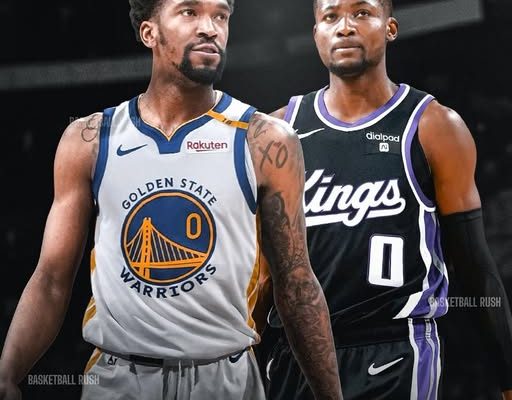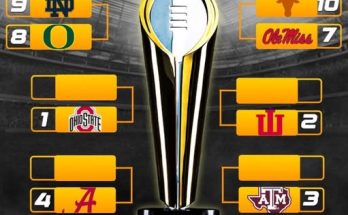The Sacramento Kings’ optimism regarding a potential sign-and-trade for Jonathan Kuminga is rooted in a combination of strategic planning and long-term vision. The Kings have been methodical in their approach, balancing the desire to add young talent with the need to maintain salary cap flexibility. Malik Monk, whose scoring ability and perimeter shooting have been key assets for Sacramento, becomes a central piece in this possible trade, not only as a player the Warriors might value but also as a means for the Kings to position themselves to acquire a player they view as pivotal for their future. By including a protected draft pick, the Kings are signaling that they are serious about the deal while also ensuring that they do not compromise their future talent pipeline, a nuance that shows careful roster management.
Jonathan Kuminga, having emerged as one of the NBA’s promising young forwards, represents a rare opportunity for a team like the Kings to acquire a versatile, athletic player capable of contributing immediately. His ability to play multiple positions, defend at a high level, and provide scoring off the wing makes him an ideal fit for Sacramento’s system. The Kings’ front office recognizes that adding Kuminga could not only enhance their on-court performance but also send a strong message to the league that Sacramento is committed to building a competitive roster around their core players. The inclusion of a protected first-round pick in the trade discussions demonstrates the Kings’ understanding of risk management: they are willing to part with future assets, but with safeguards in place to protect against unforeseen outcomes.
For the Golden State Warriors, the situation is complex. Kuminga’s refusal to sign a $45 million contract extension places them in a delicate position. They face the prospect of either trading him for valuable assets or potentially losing him without compensation if he signs a qualifying offer and departs in free agency. While the Kings’ offer involving Monk and a protected pick does not fully meet the Warriors’ ideal scenario of acquiring an unprotected first-round pick, it nonetheless presents a compromise. The Warriors must weigh the immediate benefits of the proposed trade against the long-term strategic goals of maintaining cap flexibility and roster depth. Furthermore, Malik Monk’s contract, which extends through the 2027-28 season, is a financial consideration that the Warriors need to evaluate carefully. The team’s cautious approach to exceeding the first apron hard cap highlights their commitment to maintaining financial prudence while navigating the trade market.
Despite these challenges, Sacramento’s front office believes that persistent negotiation and flexibility could bridge the gap. The Kings are counting on Kuminga’s continued leverage in free agency, as his willingness to consider other offers or hold out could pressure the Warriors into accepting a deal that aligns more closely with Sacramento’s vision. In addition, the potential acquisition of Kuminga opens further possibilities for Sacramento to improve their roster in complementary ways. One such scenario involves the addition of veteran guard Russell Westbrook, whose experience and leadership could provide a stabilizing presence in the backcourt. Combining a high-upside young talent like Kuminga with a seasoned veteran in Westbrook could create a balance of energy, experience, and skill that the Kings have been seeking to elevate their competitiveness.
From a strategic standpoint, the Kings’ pursuit of Kuminga is indicative of a larger trend in the NBA where teams are willing to leverage current assets for high-upside young talent, even if the path is complicated. By proposing a sign-and-trade, Sacramento demonstrates both creativity and patience, understanding that negotiations with teams like the Warriors, who have championship experience and a complex roster structure, require careful calibration. This approach also signals to players and agents that the Kings are committed to building a winning culture and are willing to invest in acquiring players who fit their vision. It is a clear message that Sacramento is not content to remain on the periphery of contention but is actively seeking moves that can have immediate and long-term impacts.
The potential trade also has ripple effects across the league. Other teams monitoring the situation are keenly aware that a successful transaction between the Kings and the Warriors could reshape the competitive balance in the Western Conference. Sacramento’s calculated approach sends signals to other franchises about their willingness to be aggressive and creative in pursuit of talent. Meanwhile, the Warriors’ handling of Kuminga’s situation reflects the ongoing challenge teams face in managing young players’ expectations while balancing salary cap realities and future draft considerations. The complexities of such negotiations underscore the intricate interplay between player development, contract strategy, and roster construction that defines modern NBA front office operations.
Furthermore, acquiring Kuminga could influence Sacramento’s team dynamics and on-court strategies. His versatility allows for greater lineup flexibility, including small-ball configurations, switching defenses, and fast-paced offensive schemes. For the Kings, who have been striving to find the right mix of shooting, defense, and playmaking, Kuminga offers a tool to expand tactical options. Malik Monk’s departure, while notable given his scoring ability, is mitigated by Kuminga’s potential to fill multiple roles. The Kings’ coaching staff is likely evaluating how best to integrate Kuminga into the existing rotation, considering both his developmental trajectory and the immediate needs of the team.
In addition to tactical considerations, the trade has branding and market implications. High-profile acquisitions like Kuminga can energize a fan base and signal to the broader basketball community that the Kings are serious contenders. For Sacramento, a city with a passionate yet historically underachieving basketball fan base, such moves can reignite excitement and drive engagement, both in attendance and media attention. The strategic calculus extends beyond the court, influencing marketing, sponsorships, and community engagement, all of which are integral to a franchise’s overall growth and sustainability.
Sacramento’s optimism is therefore grounded in a multi-dimensional strategy that blends player evaluation, financial management, and organizational positioning. The Kings understand that acquiring Kuminga is not just about filling a roster spot; it is about shaping the team’s identity and signaling intent to compete at the highest level. By maintaining flexibility in negotiations, leveraging assets like Malik Monk and draft protections, and considering complementary moves such as adding veteran leadership, Sacramento is attempting to maximize both immediate and long-term value from this potential trade.
While the challenges are clear, the Kings’ persistence exemplifies a proactive and strategic approach to team building. The complexities of the sign-and-trade process, combined with the Warriors’ specific requirements, make the outcome uncertain. However, the very fact that Sacramento continues to engage in these discussions demonstrates a commitment to calculated risk-taking and strategic foresight. If successful, the acquisition of Jonathan Kuminga could mark a turning point for the franchise, potentially altering the trajectory of the team’s competitiveness in the Western Conference and providing a foundation for sustained success in the seasons to come.
Ultimately, the Sacramento Kings’ pursuit of Jonathan Kuminga illustrates the delicate balance between ambition and pragmatism that defines modern NBA roster construction. By combining a willingness to offer existing talent, a protected draft pick, and creative negotiation strategies, Sacramento is signaling both seriousness and adaptability. While hurdles remain, the team’s optimism reflects confidence in their front office’s ability to navigate complex trade dynamics and achieve outcomes that align with their strategic vision. As the negotiations continue, the potential sign-and-trade serves as a compelling example of how teams in the NBA increasingly leverage financial instruments, player contracts, and strategic foresight to shape their competitive futures.
Sacramento’s calculated optimism, grounded in strategy, foresight, and adaptability, highlights a franchise actively seeking to redefine its position in the NBA hierarchy. The pursuit of Jonathan Kuminga is emblematic of a broader philosophy that prioritizes both immediate competitiveness and long-term sustainability, reflecting a front office committed to maximizing every opportunity to improve the team. If the trade comes to fruition, it will not only provide a talented young forward for the Kings but also demonstrate their capacity to execute complex transactions in a league where strategic ingenuity often differentiates contenders from the rest of the field.



